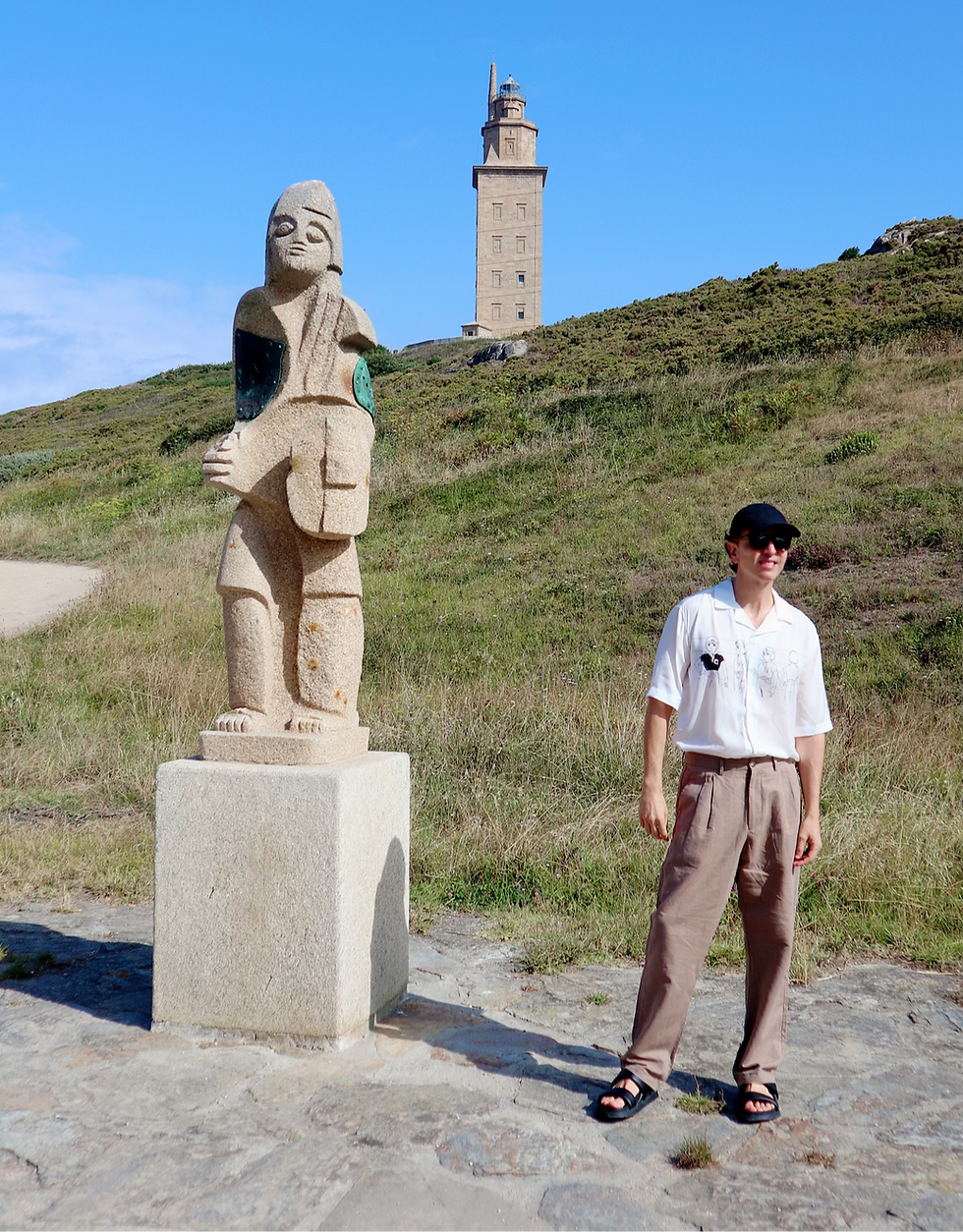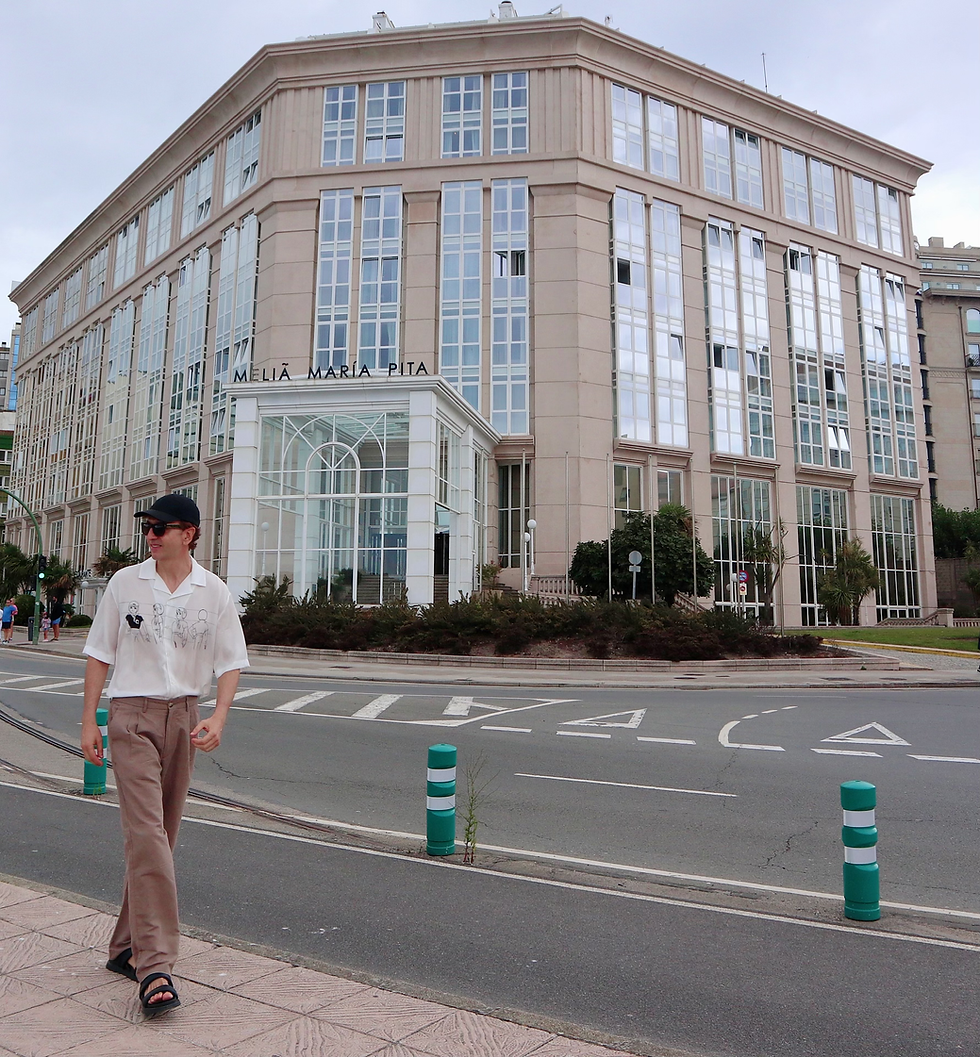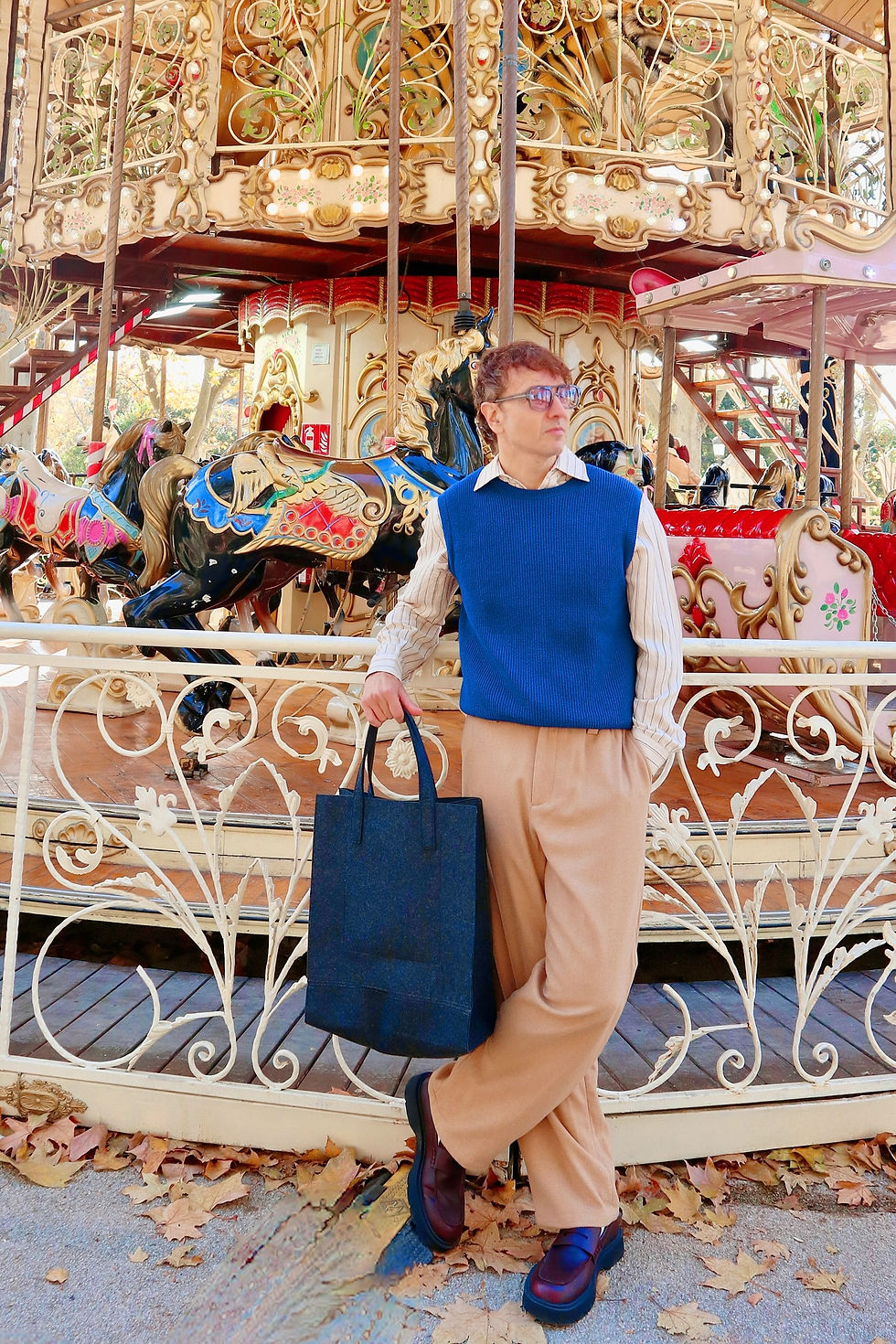LA TORRE DE HERCULES DE A CORUÑA, UN LUGAR LLENO DE MITOS Y LEYENDAS
- The Trendy Man

- 23 ago 2023
- 5 Min. de lectura

Si hay una construcción romana en territorio hispano que haya pasado a la historia, aparte del acueducto de Segovia, ese es sin duda la Torre de Hércules, el faro romano más antiguo del mundo situado en la ciudad de A Coruña.
Y es que este emblemático lugar no es un monumento sin más,¡el faro sigue en funcionamiento a pleno rendimiento! El paso del tiempo por supuesto ha hecho mella en él, pero sin lugar a dudas es una construcción resistente y fuerte ante las inclemencias del clima gallego.
Pero esto no es nada comparado con la cantidad de secretos que esconde esta estructura. Un viaje por el tiempo que te hará volver, de la mano de la Torre de Hercules a una Coruña llena de mitos y leyendas
The Tower of Hercules, also referred to as Hercules’ Lighthouse, is located in the Galician city of La Coruña, in Spain. Fifty-five metres high, it is famous because it is the world’s only working Roman lighthouse (as well as being the oldest). For this reason, it has been included on UNESCO’s World Heritage list.
Today it is considered as one of the country’s most popular tourist sites, due to its outstanding historical value and interest.
To date, there is no documented evidence of the origins of Hercules’ Lighthouse. However, it is known that it was rebuilt by the Romansbetween the 1st and 2nd centuries CE to guide the ships that sailed the western seaboard of their empire. Until the 20th century, it was known as Farum Brigantium and its construction is attributed to the Portuguese architect Gaius Sevius Lupus.



1. La relación entre el escudo de la ciudad y la torre
Si te has fijado alguna vez detenidamente en el escudo de A Coruña, habrás visto que se compone de una torre sobre una calavera en fondo azul rodeado de conchas.
En realidad, no hace una referencia per se a los continuos ataques piratas que sufría la población coruñesa (que también), sino que proviene de la leyenda que precede a la creación de la emblemática Torre de Hércules.
Cuenta la leyenda que el gigante Gerión tenía a la población de este territorio totalmente atormentados. El héroe Hércules, hijo del dios griego Zeus, supo de esta situación y partió rápidamente en busca del gigante para matarlo y así rescatar a la población de esa bestia.
La batalla duró un total de tres días y tres noches, momento en el que Hércules pudo cortar la cabeza de Gerión, acabando así con su tiranía. En recuerdo de esta hazaña, mandó construir una torre en cuya base enterró precisamente la cabeza del gigante, de ahí la calavera y la torre.
Otro dato curioso que nace a raíz de esta leyenda es que Hércules se enamoró de una lugareña, Crunia, cuyo nombre derivó después en la ciudad que todos conocemos hoy: A Coruña.
The first mention of Hercules’ Lighthouse dates back to the year 415 CE, when the writings of the day referred to “a tall lighthouse that stood in the city of Galicia, Brigantium”. It is also mentioned as “part of the route to Britannia”.
The lighthouse fell into disuse in the Middle Ages, but it was later used as a defensive element. The first renovation of the tower dates back to the 17th century, when a wooden staircase was built to reach the top. However, it was not until the reign of Charles III that it was completely rebuilt, following the designs of the Spanish engineer Eustaquio Giannini.
An interesting fact about the history of the Tower of Hercules is that it is twinned with the Statue of Liberty in New York, USA and with El Morro Lighthouse in Havana, Cuba, the oldest on the American continent.



2. El castillo y las antiguas murallas se levantaron gracias a la torre
Esto se debió a que el faro romano tuvo una época de declive en su uso, concretamente durante la Alta Edad Media.
Desgraciadamente, durante este periodo la Torre de Hércules era empleada como cantera por parte de la población, hecho que también provocó que se robasen piedras del lugar pese a que se había prohibido expresamente.
Dichas piedras fueron empleadas después para construir el famoso castillo de San Antón y las murallas de la ciudad, por lo que se puede decir que la Torre de Hércules y estos dos monumentos comparten “sangre”.
And, if you’re wondering how many steps the Tower of Hercules has, the answer is around 230, the equivalent of 2,215 footsteps. In other words, a climb to the top will burn off around 300 calories.
Today, the site where the lighthouse stands is a museum where visitors can admire the works of several major artists, set against a natural backdrop.
The Tower of Hercules is shrouded in legend. One tale claims that the mythical hero Hercules who arrived here by ship and buried the head of a giant he had defeated in battle. Other historians believe that this may have been the site of the legendary Breogan Tower, associated with Irish mythology.



3. Carlos III ordenó su remodelación y le dio su aspecto actual
En aquellos tiempos lo que es ahora A Coruña sufría constantes ataques de piratas.
Uno de los más famosos fue el pirata Drake, corsario de la flota inglesa que junto al resto de la armada anglosajona trató de invadir la ciudad de A Coruña y arrebatarle a España el dominio de las rutas comerciales del Nuevo Mundo.
Durante la toma de la ciudad, la Torre de Hércules fue parcialmente derruida, aunque después gracias al gran valor de héroes como María Pita, la ciudad no pudo ser conquistada.
Debido a este derrumbe, Carlos III se encargó de reconstruir la torre y darle la forma que tiene hoy día. Los 34 primeros metros se corresponden con la parte construida en tiempos romanos, mientras que el resto fue construido a posteriori y puesto de nuevo en funcionamiento.
Esta construcción fue declarada Patrimonio de la Humanidad por la UNESCO en 2009.
If the Tower of Hércules served as a fort and quarry during the Middle Ages, beginning in the 16th century the process of its conservation and the recovery of its function as a lighthouse was slowly begun.
In the 16th century, because of its advanced position in the ocean, the Tower – known as Castillo Viejo or the lighthouse Tower –, remains a watchtower against possible threats and attacks from the sea. This checkpoint was under the responsibility of the City Council, who paid the people who carried out that responsibility day and night. From the excavations done and the documentation conserved, it appears that the now was now surrounding by a small moat and a defensive parapet supplemented with barbed barriers. Surveillance in the Tower was done by sailors or retired marines; found from these people were the remains of white ceramic pipes and bone plates with round holes for buttons, evidence of their daily activities at the foot of the Tower.

El pantalón de de lino que llevo es de BALENCIAGA, la camisa de ZADIG&VOLTAIRE y las sandalias de COS
The linen trouser I'm wearing is from BALENCIAGA, the shirt is from ZADIG&VOLTAIRE and the sandals are from COS.






Increíble cómo historia y leyenda se funden en la Torre de Hércules. Para quienes viajan en camper, este es un destino obligado. En Selemar Camper tenemos todo lo necesario para que llegues cómodo y equipado.
https://ansarataladros.com Excelente artículo sobre este emblemático faro romano. En Ansara Taladros realizamos aperturas y demoliciones en hormigón, respetando estructuras históricas y garantizando seguridad en cada intervención.
amanecedondequieras.com Si buscas viajar y vivir una aventura plena, alquilar una autocaravana es la opción ideal. Te brinda la libertad de explorar nuevos destinos, disfrutar de la naturaleza y viajar a tu propio ritmo, todo con la comodidad de tu hogar sobre ruedas. ¡Una experiencia única e inolvidable!
eccocar.com Si estás planeando un viaje, elegir un vehículo eléctrico es una excelente opción. No solo reduces tu impacto ambiental, sino que también disfrutas de una conducción más silenciosa y económica. ¡Atrévete a cambiar!
¡Que chulo! Imagina lo emocionante que sería explorar los hermosos paisajes de A Coruña desde la comodidad de una caravana. Esta experiencia sería verdaderamente enriquecedora, permitiéndonos levantarnos y disfrutar directamente de la belleza de estos paisajes.
Por eso encuentro las mejores autocaravanas en https://www.autocaravanasmallorcatravel.com/alquiler_autocaravanas_mallorca/